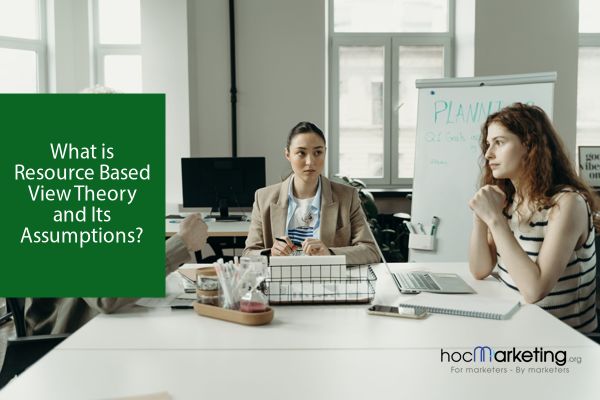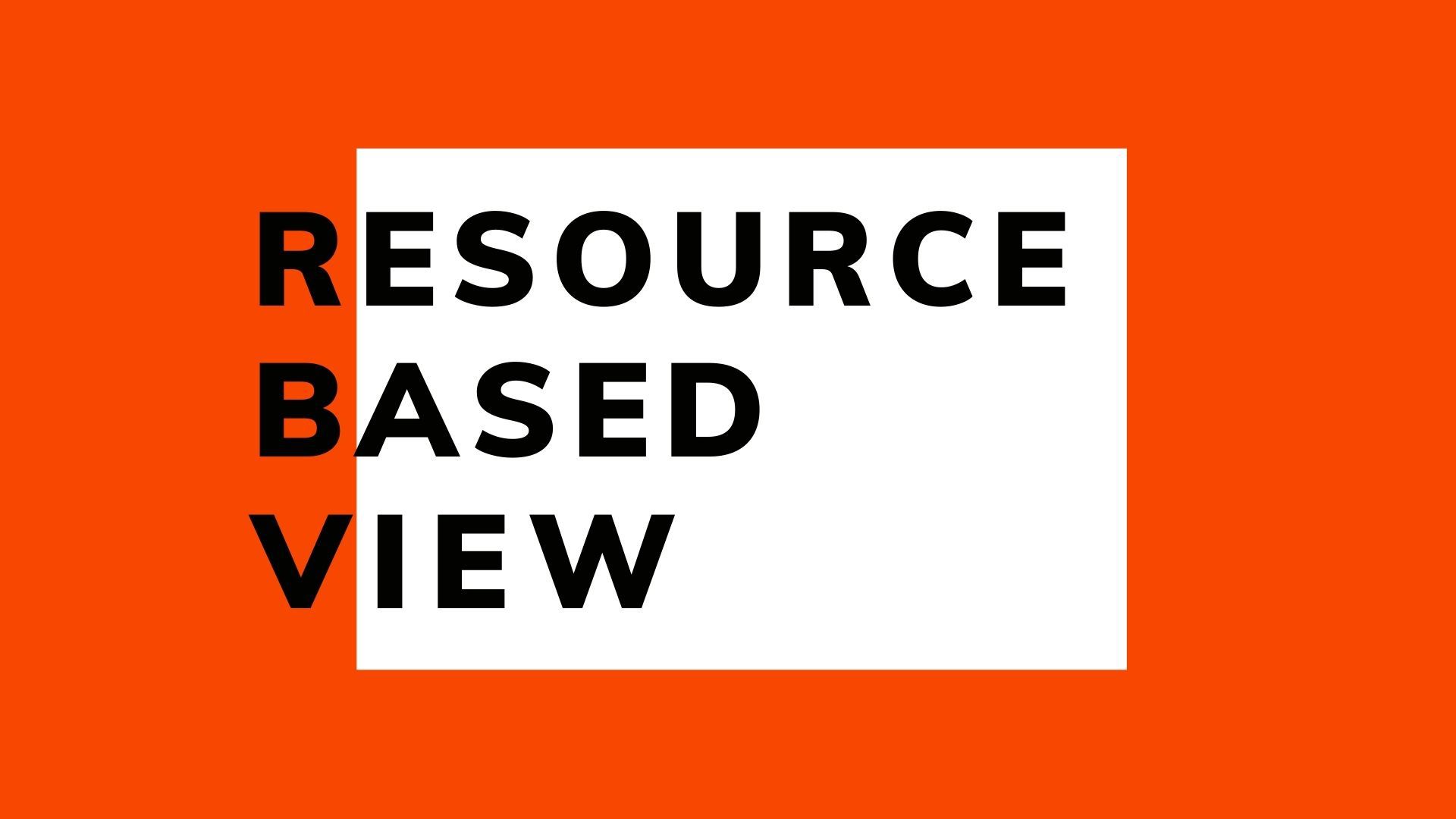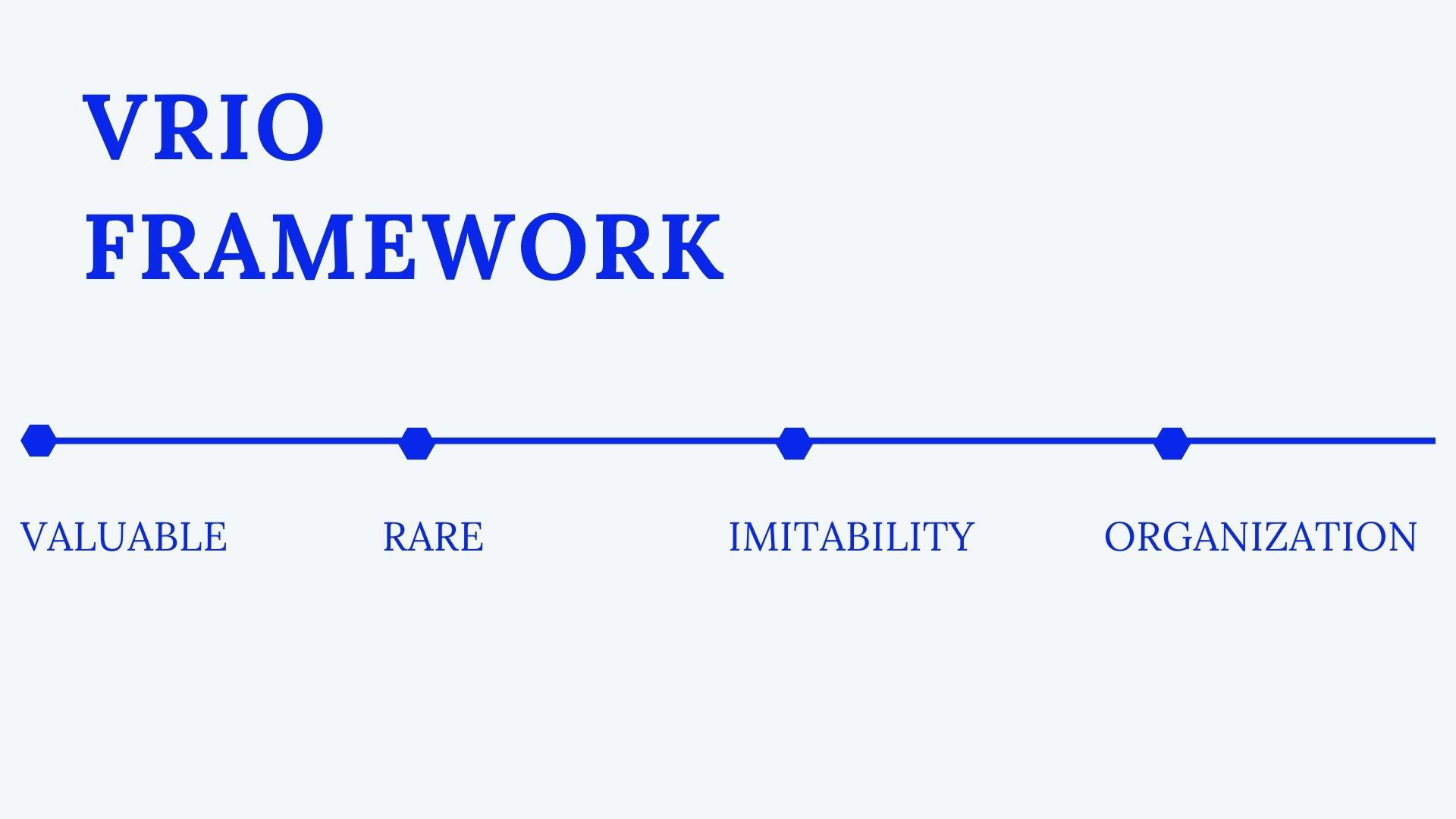
What is Resource Based View Theory and Its Assumptions?

A resource-based view is a strategic approach where a company utilizes its internal resources to gain a competitive edge in the market It emphasizes the importance of identifying and developing the company's core competencies and leveraging them to achieve success This theory involves analyzing various types of resources available to the company and making assumptions based on the company's strengths The VRIO framework is often used to assess the value, rarity, inimitability, and organization of company resources While the theory has received criticism, it remains a popular approach for companies to achieve sustainable competitive advantage
Definition
A resource-based view is a strategy in which the organization focuses on internal resources available with it to compete in the market and achieve superiority.
In today's competitive market, companies face stiff competition from various local and global rivals, copycats, and small-scale businesses. Managing such a diverse set of competitors can be a daunting task for any organization. To tackle this challenge, companies can adopt two approaches - external leadership and resource-based view.
The resource-based view, which originated in the 1980s and 1990s, proposes that companies should focus on leveraging their internal resources and capabilities to gain a competitive edge, rather than relying solely on external factors. By identifying and utilizing their own talented and competent resources, companies can create a unique market position that sets them apart from their competitors.
Why are core competencies essential?
Core competencies are essential for any business as they represent the key capabilities of the organization. They can be thought of as the superpowers of a superhero, without which the organization would be powerless.
The presence of core competencies can either lead to a game-changing innovation or no innovation at all, based on three key factors: product reliability, customer understanding, and the ability to capitalize on innovative concepts. By leveraging their skills and capabilities through core competencies, developers can either create a completely new product or make enhancements to an existing one.
Resource-based view theory
To gain a competitive edge, it is essential to explore the internal resources within your organization, according to this theory. The model highlights several crucial factors that contribute to this approach.
Types of resources
There are two types of resources in this theory:
1. Tangible Assets
Physical assets are those that can be physically touched, seen, and felt. Examples of tangible assets include capital, machinery, and buildings, all of which can be easily purchased on the market. However, since they can be easily acquired by other organizations, tangible assets do not provide much competitive advantage. In other words, these resources are easily replicable.
Intangible assets refer to assets that lack physical form but are nonetheless owned by an organization. These assets include the company's reputation, customer goodwill, intellectual property rights, and the talent of the organization. In contrast to tangible assets, intangible assets cannot be seen or touched but are nevertheless essential to a company's success.
Intangible assets require a longer timeline for development compared to tangible assets. Furthermore, customers tend to associate a company's identity with its intangible assets. In contrast to tangible assets, intangible assets are difficult to imitate and replicate, making them a valuable source of sustained competitive advantage.
Assumptions of the resource-based view
There are primarily two assumptions of the resource-based view that all the resources of the organization should be heterogeneous and immobile.
Fragment 12:
Organizations must possess unique and valuable resources
This assumption suggests that for a company to gain a competitive advantage, it must possess resources that are unique and valuable. Without such resources, a company cannot differentiate itself from its competitors and will not be able to create a sustainable competitive advantage. Therefore, companies must invest in developing and acquiring resources that are difficult for competitors to imitate or substitute.
In the real world, companies and markets are not always characterized by perfect competition. They face varying degrees of competition and external factors. Thus, the theory of perfect competition suggests that companies should rely on their internal resources rather than constantly seeking external resources.
Utilizing and adapting a company's internal resources and skills is crucial in establishing a unique competitive advantage. This includes embracing variation, which is essential in gaining an edge over competitors.
A prime illustration of the impact of heterogeneous factors can be seen in the contrasting success of Netflix and Apple TV. With a significantly larger subscriber base, Netflix's higher pricing is justified by their extensive library of original content, which sets them apart from Apple TV who is still in its early stages.
Netflix not only offers its own original content but also provides licensed content from other sources. In contrast, Apple TV subscribers are limited to only Apple's content, resulting in a lower subscription cost. However, both platforms are faced with external competition, as demonstrated by the launch of HBO Max in May 2020. While HBO Max's content was deemed more original than that of Netflix and Apple TV, its high pricing posed a threat to both platforms.
Apple TV+ is unable to replicate Netflix's business model due to the high cost of obtaining licensing for all of the content while simultaneously offering lower prices. This disparity creates a unique competitive advantage for both companies.
Companies are limited in their ability to replicate competitors' strategies due to the assumption that resources cannot be easily transferred between organizations in the short term. This can hinder companies from implementing similar strategies to their rivals in the market. Additionally, employees typically remain with their organization for a period of 3 to 6 months after being hired, and if they perform well, they may choose to stay with the same employer.
VRIO framework
Changing one's loyalty and switching to a competitor takes time. As a result, it may take a while for the competition to gain insights into the organization from its former employees.
The resource-based view theory highlights the importance of internal resources that are not only diverse but also difficult to replicate. However, the organization must also possess other attributes and capabilities that are vital for leveraging its resources. The VRIO framework emphasizes the need for resources to be valuable, rare, inimitable, and organized in order to create sustainable competitive advantage.
Valuable:
The value of the product or service is essential to establish in the market. If the resources are valuable, automatically, the final product or service becomes equally valuable.
Improving the value of resources is crucial in building the credibility of the organization. Various strategies, such as enhancing the quality of resources, reducing production costs, and modifying existing products, can be employed to boost resource valuation. On the other hand, a competitive disadvantage arises when resources lack value, as competitors can easily replicate the same offerings.
Rare
This applies to both tangible as well as intangible resources. They should be rare and hard to obtain. Selective availability of the resources gets high value for the product.
of this taste has been attempted in other parts of the world, but none have been able to match the unique flavor of the Alphonso Mangoes from Ratnagiri.
The key to a strong competitive advantage lies in resources that are difficult for competitors to replicate. Companies often prioritize acquiring expensive and rare resources to prevent competitors from being able to integrate them into their own products. For instance, Apple's iPhones utilize iOS, a technology that is proprietary to Apple and cannot be used legally by others without obtaining a license from the company.
This is what makes Apple products less imitable than the competition, and this is what gives them a remarkable competitive edge.
Organization
The competitive advantage of an organization is not solely dependent on its resources, but also on its management approach. A well-managed organization that prioritizes its people, resources, and structural performance is likely to achieve success.
When an organization has skilled and knowledgeable individuals, a talented workforce, effective departmentalization, and a sizeable workforce, it enhances its public image and strengthens its competitive edge.
Overall, the VRIO framework can be explained as
Is the resource valuable? If it is not valuable, then it will provide a competitive disadvantage.
Does it have the necessary structure and processes in place to fully utilize the resource and sustain the competitive advantage? This is where the importance of a strong organizational culture and leadership comes into play. Without proper management and utilization, even the most valuable and rare resource can become a liability rather than an asset.
If an organization is not organized, then it will only have a temporary competitive advantage. However, if the organization is well-organized, it can achieve a sustainable and beatable competitive advantage.
Criticism of Resource-based view
Critics argue that this theory falls short when faced with a truly game-changing technology entering the market. While the theory advocates for utilizing internal resources to gain a competitive edge, it becomes necessary for organizations to incorporate external innovations in such instances. In reality, relying solely on internal resources can prove to be a daunting task.
Critics argue that the VRIO framework is not applicable to every product and organization as it fails to accurately assess resources. The ambiguity surrounding the term "resources" further complicates the framework's effectiveness. As a result, the theory is only useful for achieving short-term competitive advantage and its ability to establish a sustainable and long-term advantage is questionable.
A more sustainable approach would be to not only focus on internal resources, but also to continuously seek out and develop new external resources to stay ahead of the competition in the long run. This will allow organizations to adapt to changing market conditions and customer needs, and maintain their competitive edge.








